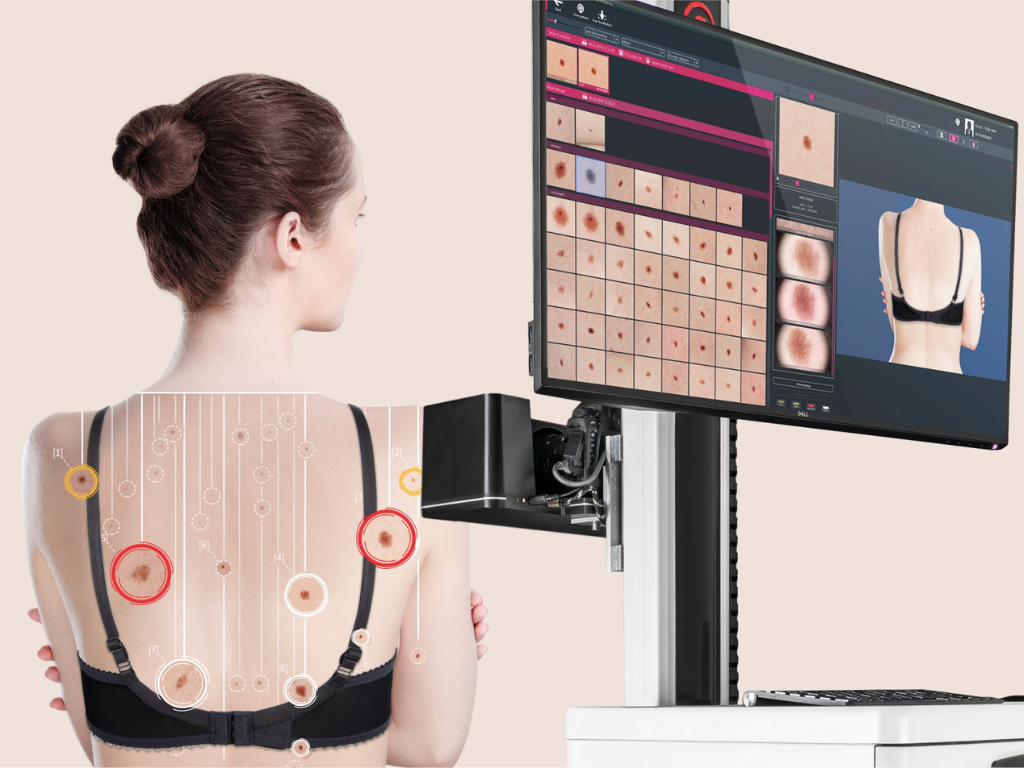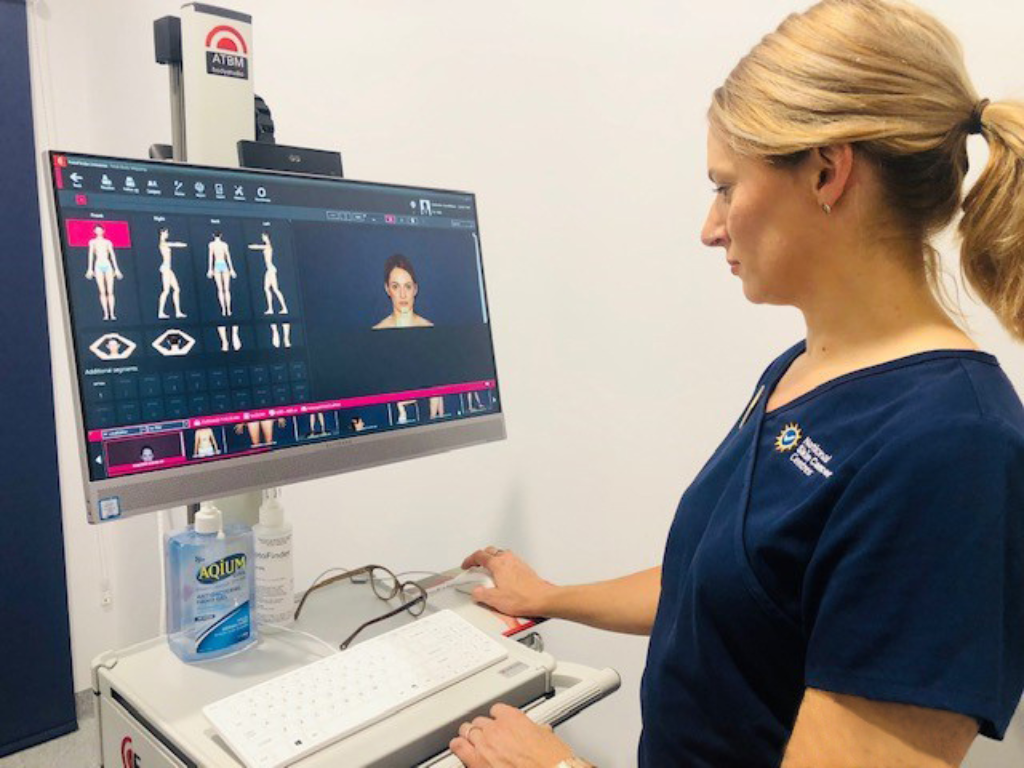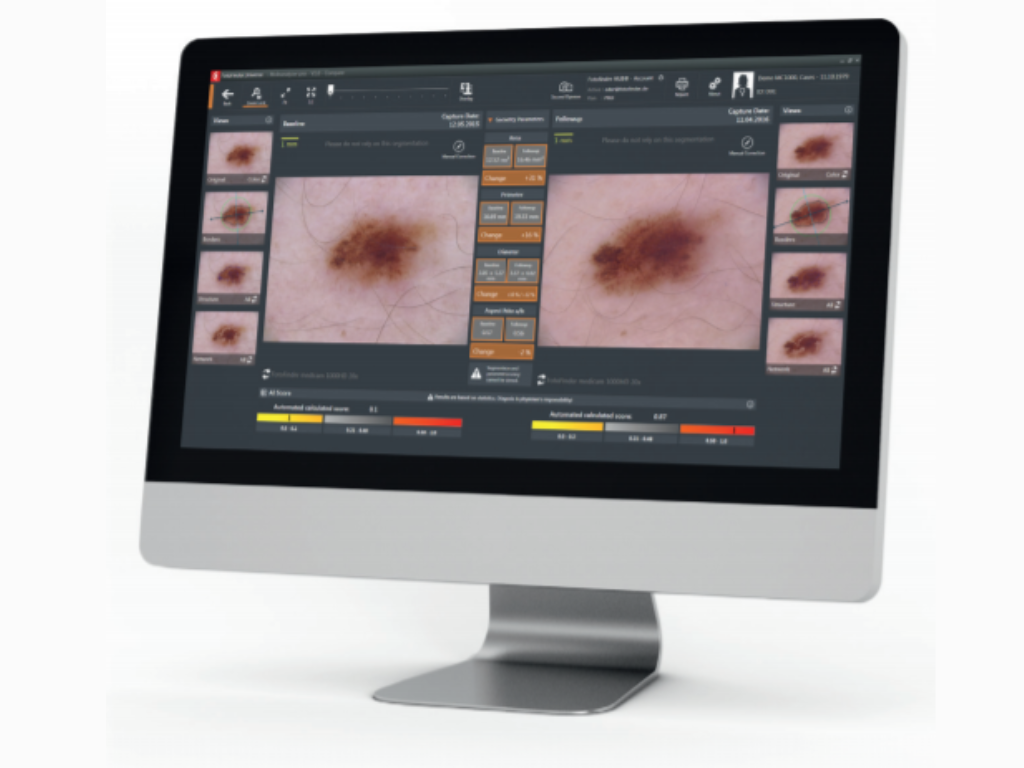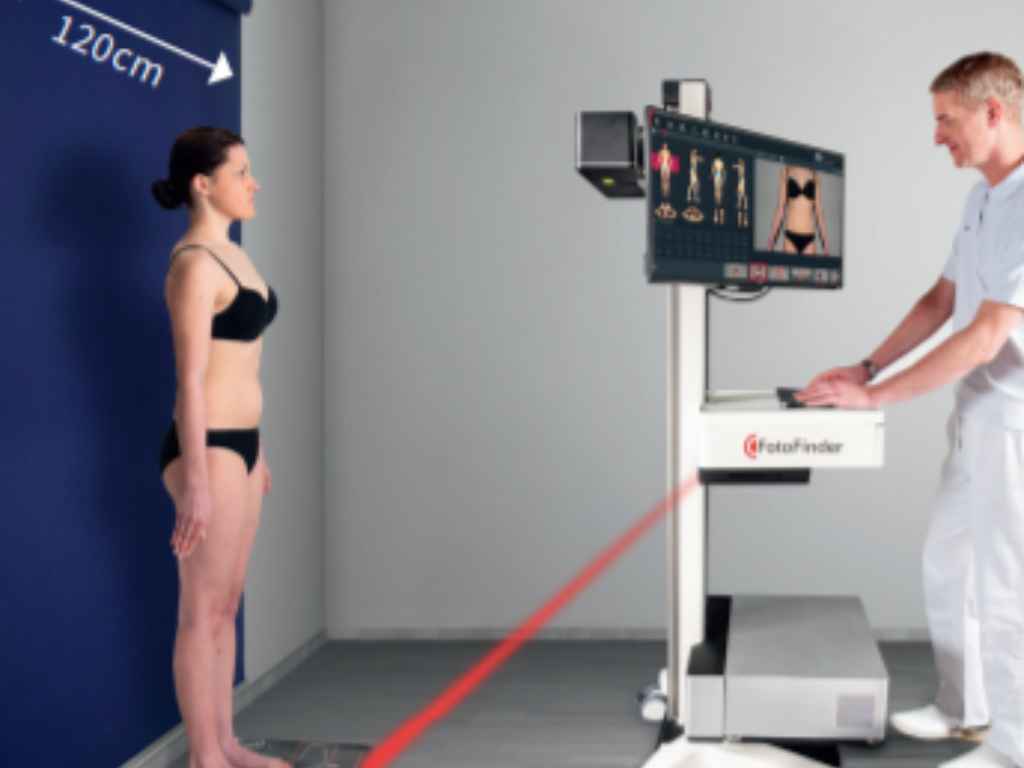Is total body photography for me?
With total body photography, we find more melanomas and we find them earlier. Let’s look at why patients in certain risk groups should receive regular total body photography as part of their skin cancer screening, and how the advanced technology might help you.

Why do I need total body photography?
For high-risk patients, total body photography – combined with a full skin cancer check with a qualified doctor – is the best method to detect skin cancers accurately and identify potential skin cancers as early as possible by monitoring changes over time.
Total body photography is now recommended by experts for all patients in certain skin cancer risk groups.
Total body photography is for you if you…
- have personal or family skin cancer history
- have many moles or freckles
- are over 40 years old (especially males)
- have been sunburned or used a sunbed
- have a fair complexion
- have red hair or light-coloured eyes
- burn easily or don’t tan in the sun
- work or spend lots of time outdoors
- have a weakened immune system
The earlier a melanoma is found, the quicker it can be treated, leading to a higher cure rate. At the same time, total body photography reduces the amount of unnecessary excisions because lesions can be compared by AI technology to check what they looked like 12 months ago.

How is total body photography incorporated into my skin check?
Your total body photography session will be performed in a separate appointment (with a nurse) before your skin check with the doctor. Your doctor will still conduct a thorough, full-body skin exam with a dermatoscope, and they will pay special attention to any suspicious lesions highlighted by the total body photography AI system.
Total body photography should be seen as an adjunct to a comprehensive skin check, not a replacement.

3 benefits of total body photography
1. Earliest skin cancer detection
Total body photography takes photos of all your moles on your entire body and categorises them by shape, size and location. If there is a suspicious lesion, your doctor can go back to the reference scan and compare it. Easy side-by-side comparison reveals the most subtle changes in moles that may be indicative of melanoma in its earliest and most curable phase.
2. Less scares and less scars
Suspicious lesions are highlighted and can be removed faster in less invasive procedures. Unnecessary biopsies of moles that haven’t changed can also be avoided.
3. Peace of mind
Whether you have lots of moles, have a family or personal history of melanoma, or just want reassurance to confirm your doctor’s diagnosis, total body photography can eliminate these worries.

